Windows ME VPN Configuration
|
More information about Real Time's products & services is available on our sales web site. Direct links for each item are listed below:

|
NOTE: The following instructions are for connecting to a Real Time Linux Firewall with VPN services only, if you are trying to connect to any other server, these instructions will not help you.
Take a look at Real Time's Firewall and VPN information to learn more about our Linux Solutions.
Table of Contents:
Installing Dial-Up Networking
-
Before setting up a VPN connection over PPTP, the necessary software must be installed. Click on your
Start button, then go up the menu to Settings, and from there to Control Panel. Choose
the Add/Remove Programs icon.

-
Double-clicking on the Add/Remove Programs will open a window with a title like the one shown.
Click on the Windows Setup tab to display the pictured information.
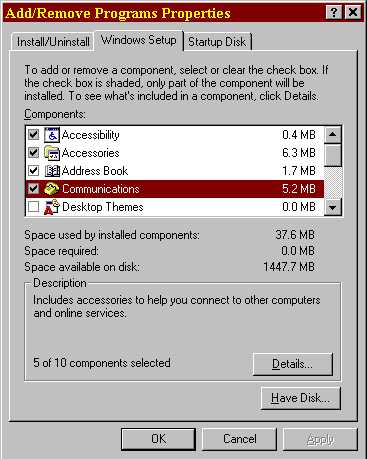
-
Double-clicking on the Communications item will display a number of optional communications
packages. Scroll down until you get to the bottom-most one, Virtual Private Networking. If there
is not a check mark in the square next to it, click once in the empty square to check it. Otherwise, if
there is a check mark next to it, that means the software is already installed.
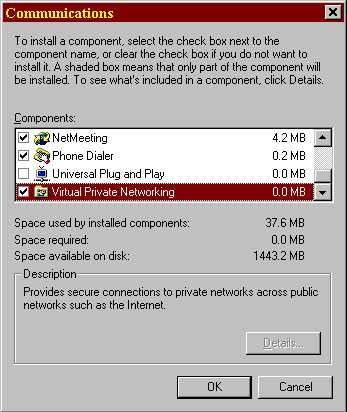
Click on the "OK" button to close this window; then "OK" again to close the previous window. At this
point, Windows will probably ask you for the Windows ME CD. Follow the instructions, which will install
the added software you just selected. Be sure to reboot after installing the new software.
-
To make sure your installation was successful, double-click the Network icon on your control
panel. (If the panel is not open already, go to Start->Settings->Control Panel->Network.) You
should see Dial-up Adapter (VPN Support) and a Microsoft Virtual Private Networking Adapter.
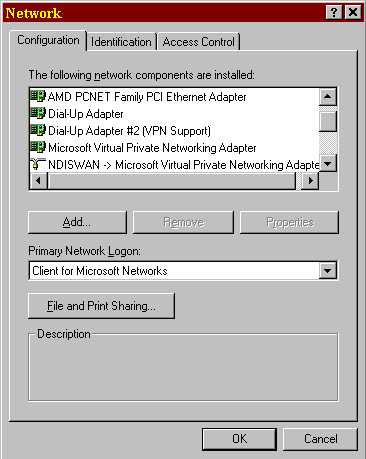
Configuring PPTP Connection
-
Go to My Computer and double-click Dial-Up Networking. You will see the screen shot below.
Double-click Make New Connection. (Note, if you do not see a Dial-Up Networking icon here,
then Dial-Up Networking is not installed. Refer to the instructions for installing Dial-Up Networking.)

-
Type anything you want for the name of the connection. For the device, select Microsoft VPN Adapter
as shown on the left. (Note: if you do not see Microsoft VPN Adapter in the list, then the correct
version of Dial-Up Networking is not installed. Refer to Installing Dial-Up Networking.)
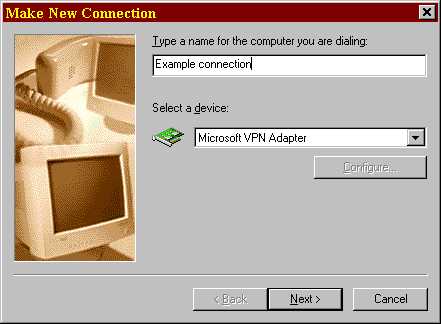
-
Fill in the name or IP address of the VPN or PPTP server you are connecting to. You
will find this on your VPN Information Sheet. Click Next.
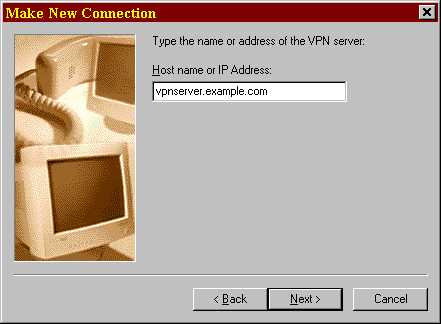
-
Click Finish.
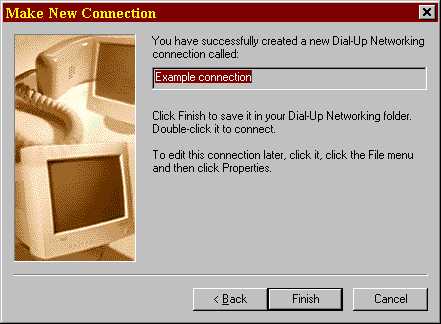
-
Now you should see the connection you just made in the Dial-Up Networking Folder. Right-click
the Connection and select Properties.

-
Select the Networking tab and check Enable software compression and TCP/IP. Now
click the TCP/IP Settings button.
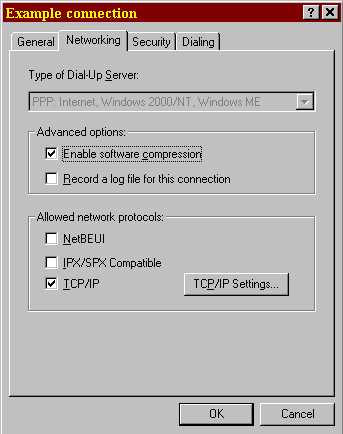
-
Check Server assigned IP address and Server assigned name server addresses. Click OK

-
Fill out the Authentication (User name, Password, Domain) area with the information that was provided
on your Account Sheet. Also, place a check in Log on to network, Require encrypted password
and Require data encryption. Click OK.
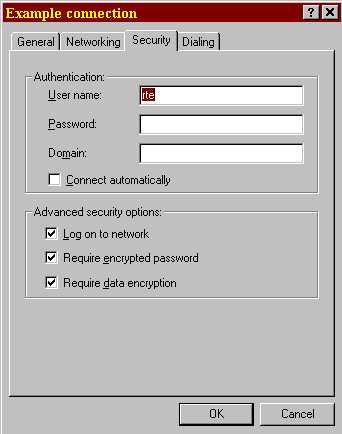
Connecting
You must be connected to the Internet before trying to establish your PPTP VPN Connection. If you
are not, the VPN connection will not work.
-
Double-click the connection you just made above.

-
Enter your Username and Password - this should be your VPN username and password, which
you should get from your VPN Information Sheet. The VPN Server should be filled in from when you
setup the connection - verify that it's correct. Place a check in the Save password box if you
wish save the password. Click Connect.
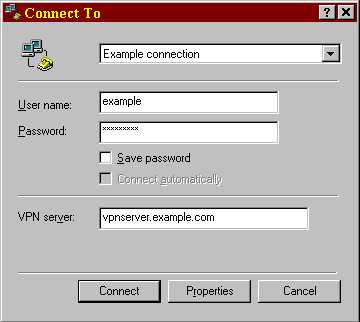
-
You may be presented with the Enter Network Password screen when you establish the VPN connection.
This is for logging on to an NT server on your remote office network, after logging on to your VPN server.
Fill in your User name, Password, and Domain for the network you are connecting too.
These should be the same as you use when you're in the office. If you don't know what to fill in, refer
to your system administrator.
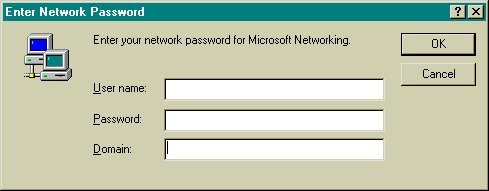
-
After you successfully connect, you will see the Connection Established screen. Click Close.
Now you should be able to browse the network as if you were at the office. If you use mapped or shared
drives, you may need to map them again.

VPN for Windows ME should now be successfully setup on your computer to securely access a remote network.
The instructions and screen shots contained within this website are specific to services offered by Real Time Enterprises only.
If you have any problems connecting to Real Time after carefully following these directions, please call (952) 943-8700 and we will
be happy to help you.
Permission is granted to copy, distribute and/or modify this
document under the terms of the GNU Free Documentation License,
Version 1.1 or any later version published by the Free Software
Foundation; with no Invariant Sections, no Front-Cover Texts and
no Back-Cover Texts. A copy of the license is included in the
section entitled "GNU Free Documentation License".
|
|



